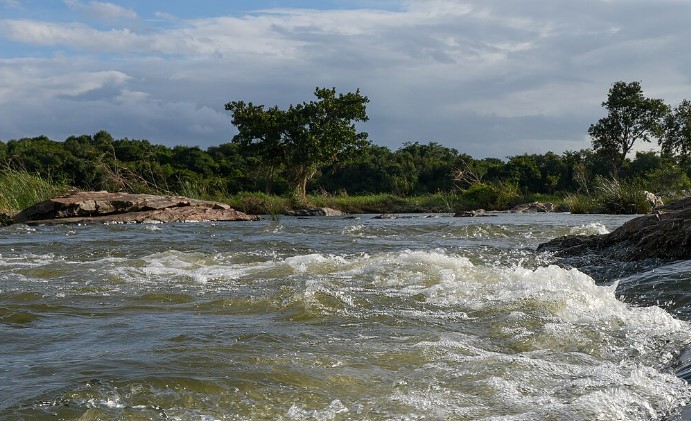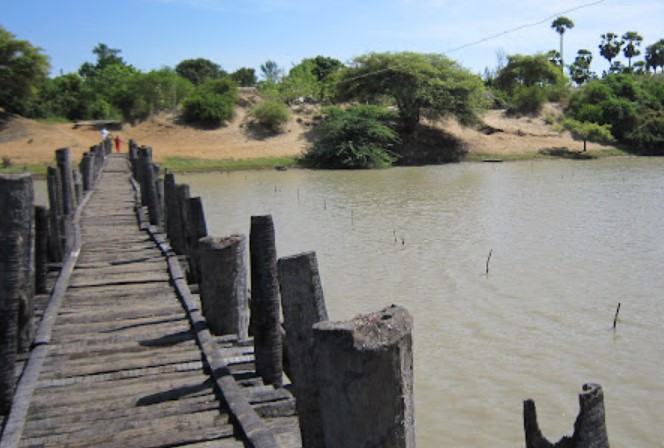- Vaimoornathar Temple, located in Tiruvaimur in the Tiruvarur district of Tamil Nadu, is the 241st Thevaram Paadal Petra Shiva Sthalam and the 124th temple on the south side of the Kaveri River in Chozha Nadu. This revered shrine is dedicated to Lord Shiva, known as Vaimoornathar, and the goddess is called Paalinum Nanmozhi Ammai or Ksheeropavachani.
- According to Periyapuranam, Sekkizhar narrates the story of Thirunavukkarasu Swamigal, who was instructed by Lord Shiva in a dream to visit this temple while he was resting at Thirumaraikadu.
- The temple holds significant cultural and spiritual importance, as it is celebrated for its association with the hymns composed by saints Appar and Tirugnanasambandar. It is also one of the Saptha Vidangam temples, known for showcasing the seven forms of dance of Shiva. Notably, the temple is famous for the Kamala Natanam dance pose, which symbolises a lotus swaying in the breeze, represented by Nallavidangar.
PURANIC SIGNIFICANCE 1:
Saptha Vidanga Sthalams:
- Muchukunda Chakravarthy was a great and valorous Chola king. He was once approached by Indra for help during the war between Devas and Asuras. Muchukunda gladly agreed to help the lord of the Devas, and joined in the war. Finally, with Muchukunda’s aid, the Devas succeeded in routing the Asuras, and Indra was extremely grateful to the king. He offered the king a gift of his choice and Muchukunda asked for the Thyagarajar Moorthy worshipped by Indra. Indra was perplexed by this request as he did not want to part off with his precious moorthy, but the king wouldn’t accept anything else.
- He finally decided on a deception, so he ordered to make six similar moorthis and asked Muchukunda to find out the one he wanted. Muchukunda was a smart king, and prayed to Shiva to identify the correct one and found the original moorthy. So Indra gave him all the seven moorthis to Muchukunda. Muchukunda kept those moorthis in seven temples which are called Saptha (seven) Vidanga temples. Muchukunda returned to earth with the seven Thyagarajar moorthis and installed them at various places in his kingdom.
- The original one he kept at the temple at Thiruvarur, and the others at Thirunallar, Vedaranyam, Thiruvaimur, Tirukaravasal, Thirukkuvalai and Nagapattinam. These seven temples are collectively known as Saptha Vidanga Sthalams. Vidanga means something that has not been chiselled out. These seven Thyagarajar moorthy are believed to be divine – not made by chisels.
- Appar and Sambandar got darshan of Shiva here:
- When Appar was staying at Vedaranyam, Lord Shiva appeared to him in his dream and prompted him to visit this temple. Appar followed the route as indicated in the dream by the Lord and was able to reach this temple, when he reached the temple he could not find the Siva Linga and Lord Ganesha led him to the correct place inside the temple. There is an idol of Ganesh with his trunk pointing to the direction of the Lord Siva. Sambandar who was also staying at Vedaranyam eventually followed Appar to this temple. Both Appar and Sambandar were blessed by Lord Shiva by revealing his resplendent divine form in this temple.
Surya worshipped Shiva here:
Surya is said to have worshipped Shiva here (the temple tank here is named Surya Theertham, and the sun’s rays strike the sanctum on the 12th and the 13th of Panguni month.
Leelaahaasyapuram:
Thiruvaimur is known as Leelaahaasyapuram in Sanskrit.
Sambandar got dance darshan of Shiva & Parvathi:
Sambandar got the dance Dharshan of Lord Shiva with Parvathi Devi in this temple.
Prachanda Maarutha Theertham:
Brahma and other Devas afraid of Taarakaasuran became birds, came to this holy place, took bath in the Prachanda Maarutha Theertham to ward off their sins, worshipped the Lord to be relieved from their sins.
PURANIC SIGNIFICANCE 2:
- The story of Thirunavukkarasu Swamigal and his journey to Thiruvaimur is a beautiful legend that intertwines devotion, divine encounters, and the rich tapestry of Tamil Shaivite tradition. The significance of the temple, with its connection to both Thirunavukkarasu and Thirugnanasambandar, highlights the deep reverence these saints had for Lord Shiva.
- The presence of the "Apparukku Kaatchi Kodutha Shiva," representing Shiva's darshan to Appar, adds a poignant layer to the temple's spiritual atmosphere. The tale of how the temple doors opened only after Thirunavukkarasu completed his hymns reflects the themes of patience, devotion, and divine timing.
- The connection to the Ashta Bhairavas, along with the special Jayanthan poojas, illustrates the temple's importance in the larger mythological context, particularly with the story of Indra's son Jayanthan and the blessings of Bhairavas. Each ritual and festival here serves to commemorate and honour these divine interactions.
- Furthermore, the legend of the saptha vidanga sthalam and Muchukunda Chakravarthy's quest for the original Thyagaraja adds another layer of richness to the temple’s history. The replication of the Vigrahams and the discerning of the original by Muchukunda is a testament to the reverence for these divine forms.
- The links between the various temples dedicated to the Vidangas illustrate a profound network of worship and divine presence across the region, each with its own unique legends and significance. Thiruvaimur stands as a central point in this narrative, embodying the confluence of devotion, mythology, and the enduring power of faith.
HISTORY OF TEMPLE:
- The Vitanka form is that form of Lord Siva in His heavenly abode.
- He desired to have this form on earth also.
- Lord Indra once solicited this Vitanka form of Lord Siva. Vitankam is a small Sivalinga form and the Lord told Indra that this Lingam could not be worshipped in the Indralokam, a world of pleasures.
- However, He gave the Vitanka Lingam to Lord Indra because of his compulsion. Knowing the significance of the Lingam, Lord Indra was carrying on the poojas in an appropriate manner.
- But, the Lord wanted the Lingam to be in the human inhabited terrain.
- When Emperor Muchukuntha was ruling, people were suffering due to the attack of wild animals.
- So, the Emperor went off on a hunting expedition and after completing the hunt in the northern part, he came to the banks of river Kaveri.
- On a Sivarathiri night while he was hunting, a few sages passed that way.
- They told him that they were proceeding to the Vilvaaranya Kshetram to perform Sivalinga Pooja during Sivarathiri night.
- Scriptures do not allow animal hunting in Sivarathiri.
- The regretted king abandoned his kingly attire, wore an ascetic outfit and went with the sages.
- Lord Siva appeared before the king who repented for his action.
- The Lord told him to retrieve the Sivalinga, which was with Lord Indra and install it in the earth for the purpose of worship.
- At that time, Lord Indra was seeking help to put down Vaalaasuran and he had offered as a gift his elephant Iraavatham, his white umbrella and any gift asked if someone put an end to Vaalaasuran.
- The Lord advised the king to kill Vaalaasuran and get the Sivalingam as a gift.
- A wise man will win even God.
- Emperor Muchukundan told Lord Siva: "I’ll do likewise.
- But Lord Indra is likely to cheat me by giving a similar Lingam like Vitanka Lingam.
- So, please show me how the Vitanka form would be!" Lord Siva conceded to his request and there arose a flood of light all over the place.
- Apart from Emperor Muchukundan and the sage, the entire Angel world thronged there.
- The emotion-filled Muchukundan urged the Lord: "O Lord! Thou be in the Indraloka as well as here as Thou are now.
- I’ll raise a temple for Thee!" The Lord accepting their plea remains here in this sacred place.
ADMINISTRATION:
The Vaimoornathar Temple in Thiruvarur is administered under the Hindu Religious and Charitable Endowments (HR & CE) Department of the Government of Tamil Nadu.

